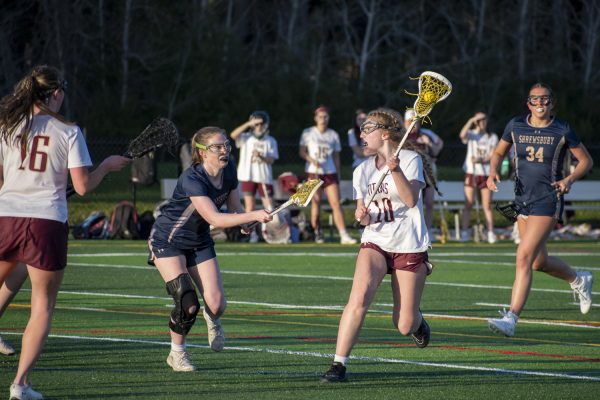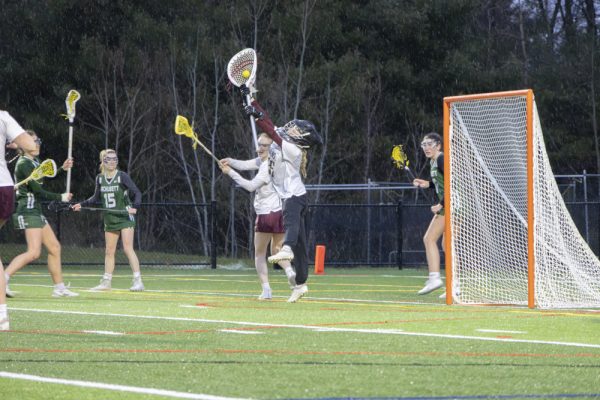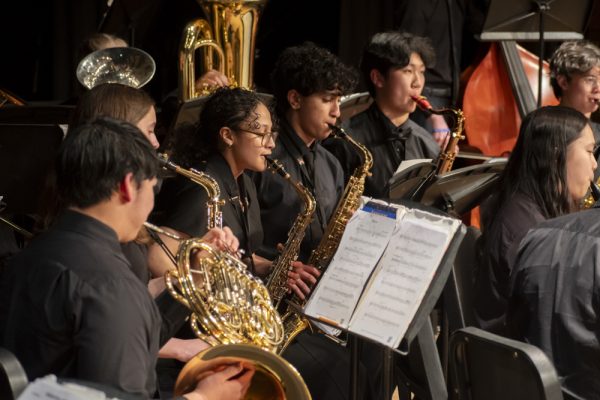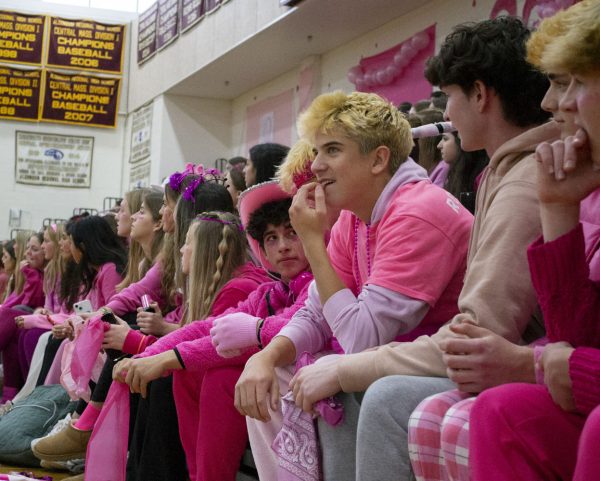Megabytes inspire mega change to Wi-Fi network
Sophomore Sumati Rangaraj writes in a notebook while using one of the library computers.
April 28, 2015
Improvements to the wireless system have made an impact on students’ usage of popular websites and apps, including the blocking of social media app Snapchat.
The Technology Support Department said they are working to make the school Wi-Fi networks in the school more accessible for educational purposes, while at the same time giving students enough freedom to use their own mobile devices when appropriate.
“I think it’s clear that the most important thing is that educational use [of the Wi-Fi] is what we need to promote,” System Manager Susan Whalen said.
Due to complaints of slow service, the school’s network has undergone many changes in order to enrich the educational experience.
“The technology department has been working closely with outside network consultants to improve and tweak our network,” Director of Technology Jean Tower said. “We have made many recent changes to configurations that should improve overall connectivity and speed.”
Tweaks to the network included deactivating the “ARHS” network and throttling, or limiting access to, the Guest network. This means less wireless availability for student and guest use, but yields improvement in the connectivity for educational use.
“Snapchat in one day will use 30 gigabytes of data. On a daily basis we have 700 unique clients using Snapchat, which is over 50 percent of the student body.
— Thomas Caron, Technology Specialist
After examining usage reports from the bandwidth shaper, the tech department discovered that Snapchat and Netflix were the third and fourth biggest users of the school’s bandwidth.
“Snapchat in one day will use 30 gigabytes of data,” Technology Specialist Thomas Carron said. “On a daily basis we have 700 unique clients using Snapchat, which is over 50 percent of the student body.”
This data resulted in Snapchat being blocked by request of administration.
“It wasn’t really for the learning process,” Assistant Principal Michele Tontodonato said. “It’s used by kids, but not for educational purposes.”
“We noticed there was so much traffic on stuff that wasn’t being used for educational purposes,” Whalen said. “We’re still allowing [use of the Wi-Fi], but we’re limiting it.”
Though a big change, department members believes this change will not affect student life immensely.
“We’re not throttling it so much that it can’t be used,” Whalen said.
Students will still be able to use the network, but wireless availability will be focused on educational use.
“The reason behind limiting the guest network is so we can ensure that teachers are still able to teach and have enough of the network to complete lessons,” Carron said.
The network, or “the pipe” as the tech department calls it, has a possible 150 megabits of network bandwidth available per second in the school. Throttling the network has limited each user to five megabits per second.
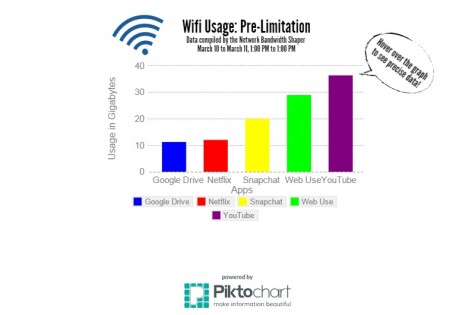 Max Donahue
Max Donahue
Five megabits per second is enough service to watch a 1080p YouTube video via Wi-Fi.
District Technology Manager Andy Mariotti assures users that the five megabit limitation is sufficient enough for everyday use.
“If you’re streaming videos on youtube or doing what you normally do online, five megabits per second is going to give an individual user what they need to do that,” Mariotti said. “It shouldn’t cause that many issues.”
With over 1200 devices on the network at any given time, the tech department is trying their best to achieve equity of usage for everyone at the school.
“[The changes] will probably affect me. But it’s school, so we can all live with it. School is for educational purposes,” sophomore Katelyn Li said.












